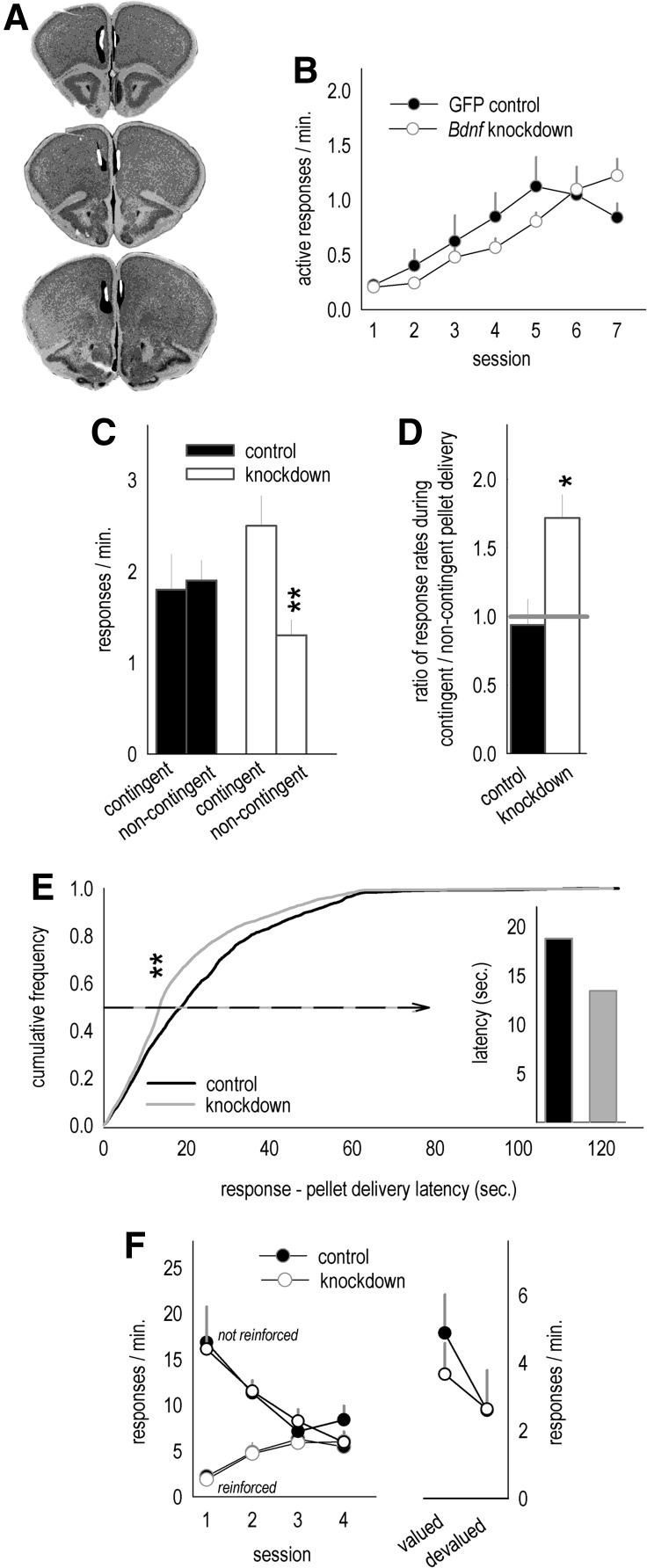Figure 2.
Prelimbic cortex-targeted Bdnf knockdown increases sensitivity to the relationship between a response and its outcome. (A) Viral vector infection sites were transposed onto images from the Mouse Brain Atlas (Rosen et al. 2000). GFP or Cre were detected either slightly offset from the midline (represented in the left hemisphere) or directly adjacent to the midline (represented in the right hemisphere). Black represents the largest and white the smallest infusion sites. (B) Instrumental response acquisition was unaffected by Bdnf knockdown in BALB/c mice. (C) A comparison of response rates during test sessions when pellets were delivered contingently vs. noncontingently indicated that control mice were acutely insensitive to modifications in the predictive relationship between a response and an outcome. By contrast, Bdnf knockdown mice showed precocious sensitivity, generating higher response rates when responding was more likely to be reinforced. (D) Response rates were also converted to ratios: Here, knockdown mice generated ∼1.7-fold more responses during the test session when responding was more likely to be reinforced. (E) Additionally, when pellets were delivered noncontingently at a fixed rate, responses generated by knockdown mice were more closely aligned in time with pellet delivery. (Inset) The average latencies between responses and noncontingent pellet deliveries at the 50th percentile are indicated for each group. (F) When a previously inactive aperture became active, mice acquired the new response and inhibited the previously reinforced response, but here no differences were detected between groups. Moreover, response rates dropped in both groups after prefeeding devaluation of the food outcome. Bars and symbols = means + SEMs, (*) P ≤ 0.05, (**) P ≤ 0.001.

